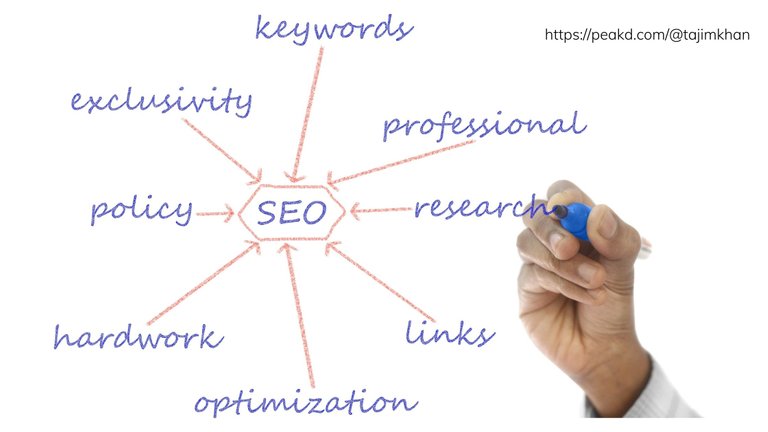How to Make a Blog SEO Friendly — Learn 10 Basic Tips Today
Are you looking to make your blog more SEO-friendly? Do you want more visitors to your blog?
Creating a blog can be an exciting and rewarding experience, but it’s important that you don’t forget about the basics. If you want to rank higher in search engines like Google or Bing, then there are some things that need to be done right from the start. To help guide you through this process, I have put together a list of 10 tips for making your blog more SEO-friendly.
By following these simple steps, not only will your site become easier for people to find online but also increase its overall performance on search engines too! So without further ado let’s get started…
Keep reading and learn how to make a blog SEO-friendly!

What is SEO
SEO stands for Search Engine Optimization. The core of SEO is publishing content for both readers and the Search Engine.
SEO-Search Engine Optimization is the process of attempting to improve your website's presence in search engines. It also refers to the various techniques that are used for this purpose.
It is the process of getting traffic from the "free," "organic," "editorial" or "natural" search results on search engines. It is distinct from PPC (Pay Per Click) advertising in that it is not dependent upon payment. SEO can be done for free if you know how to do it correctly.
To simplify it more, it is the process by which you can rank higher in search results. For instance, if you searched "Top 10 Netflix Movies" — The first (organic) result that Google provides for your search, has done the optimization the best.
SEO is generally used as a term that covers both On-Page SEO and Off-Page SEO :
Off-page optimization - Things like building links, Press Releases, Article marketing, Blog commenting, etc. Which are not related to the content directly.
On-page optimization - Things like meta tags, titles, external-internal links, alt attributes, etc. Which are directly related to your content. Which you can manage before publishing.
10 Basic Tips to Make a Content SEO-Friendly
If you write relevant content and you satisfy the search intent of the user, your content will naturally rank higher. To add the cherry on top, you can do certain things to add value for your readers and the Search Engine. Search Engines are bots, but they are smart. You cannot just trick them. Having said that, you can always learn how the bot acts to index contents.
Let's jump to 10 basic tips on how to make a blog SEO-friendly.
Think Before You Write
When you are writing try to walk in your reader's shoes. Think about what people actually want to read. Think about their search intent and try to address the needs and satisfy those.
If you can do that, you're going to be way ahead of the competition.
Also, try to imagine a specific person or a small team of people as your target audience and write for them. Understand their likes, dislikes, desires, etc. Learn your audience's demographics.
Make sure the content is valuable enough to become popular by itself, but also useful enough for someone to link back from social media or word of mouth, which will improve rankings.
You should:
- Think about what readers want to read
- Address the desire/search intent
- Cover the interest of the audience (They must benefit by reading your post)
- Decide what is your goal (Make sale, rank keywords, gaining popularity)
Make a Structure of Your Blogpost
Organize ideas, concepts, and information in a logical flow so your post makes sense from start to finish. You can write out your point A through point Z or you can use bullet points. Make sure there is some kind of progression from top to bottom as readers will bounce as they look for new content if you just have listed on lists!
If you can make a framework, not only will it become easy, it will also save you a bunch of time. It will improve readability as well.
You can do this anywhere. Just find:
a title — a lucrative and relevant one.
Introduction — some interesting words which will give ideas about the post and will also hook the audience. Start with a catchy first sentence.
Main body — things that you promised to deliver, which readers are looking for.
Conclusion/Wrap up — summarize the content, try to engage them and tell them to read or a call to action.
Use Lucrative and Appropriate Titles
Title tags are the most important factor for search engine optimization (SEO).
Title tags are designed to let search engines know what keywords you are trying to rank under. A title tag should contain your primary keyword, but it should also include secondary keywords if possible.
A title tag is like a headline. It tells users and search engines what the page is about. The optimum length of a title tag is between 50 to 60 characters, including spaces. Title tags that exceed 70 characters will be truncated in SERPs.

Title tags include meta keywords that allow you to list targeted keywords or keyword phrases relevant to your site content. When used properly, these can help make your site show up more frequently in organic search results by targeting specific topics related to your web page's content.
You should choose fascinating and extraordinary headlines for your blogs. Do not use click baits, it won’t be good.
Now when you have nailed the headline, make sure your content is relevant to the title. Your content needs to match up with the words being searched if you wish for it to show up within the first few pages of a Google search result list.
Use Headings and Subheadings Correctly
Headings help the user to navigate around your content. The better you can describe what your article is about, the easier it will be for them to find exactly what they are looking for.
It will also be wise to use keywords in your headings. Putting matching terms or keywords in subheads will help the Search Engine understand what is your blog saying.
If a search engine sees several keywords in your page content, it will notice you have more than one thing to say about the topic and rank you higher because of this.
It is best to use H1 for your main heading, then H2, H3, etc. You can also add images with ALT tags that include key phrases or terms to help people understand what your blog post is about when they skim over them in search results.
Use Short Paragraphs and Transition Words
It will be best if you can write in small sentences. Divide them into short paragraphs and use transition phrases. This will make your article easier to read.
As an example, the previous paragraphs were very short and contained less than 5 sentences. You can see that there are transition words between each sentence. This makes it easy for the reader to read the whole thing without becoming confusing or bored at any point.
Writing in this way should make your blog posts more readable, allowing search engines to index them faster, which will improve the chances of your posts appearing higher up on results pages when relevant terms are searched for by other people.
Another example: Although this article contains longer paragraphs, you should take care not to let the text become too long as this makes it hard to read and increases the chances of readers leaving your site before they have fulfilled their search intent.
This sentence was long and might be hard to read. A good writer won't use complex words. They would rather use easy words everyone can understand.
Add Links But DON’T Overdo It
You should link to your reference when you are stating a fact. This will make the content more credible. Also, link your other contents to co-promote them. This is a good way to increase traffic and improve your site's rank.
The downside of linking too much is that Google may consider your content as "link-baity". This means that there are just too many links for no reason other than to get other sites to link back. If this happens, the search engine will drop your site's ranking because other people won't trust it.
You can use internal links to promote your old content. And when you are referring to a fact, try using edu/gov sites or trustworthy authority sites. Simply try to link credible sources for your information.
Use Keywords, Matching Terms but DON’T Stuff Them
Keyword density is an important part of on-page SEO. It is the percentage of times you use a keyword in terms of the total number of words in that webpage.
In order for a page to be considered "SEO friendly," it must have a good keyword density. You must not use keywords unnaturally. You can also apply TF-TDF analysis to make your keyword density better.
Matching terms or synonyms are a great way to use keywords. They are not only natural sounding but also give the reader a clear idea of what your content is about.
Search Engines look for keywords, but if you over-use them, it's considered spam. It will do more harm than good. Search Engines have become really smart these days and stuff like that just doesn't work anymore! They know when you're trying to 'trick' them into ranking you higher in their search results.
You can use as many keywords as possible, just don't be too obvious with stuffing them all over the place or it'll backfire on you. If you want to create content which is well written so people actually care to read it through properly instead of skipping to the main bits, just write with relevancy.

Optimize the Length of Your Blog Post
When writing articles, take the length into consideration. The longer you write your blog post, the more time you can spend on making it helpful and encouraging. There are many SEO tools for checking the word count of your article that may be useful in this case. Also, once you have finished writing a long post, you should give it an appropriate title - short enough to make people want to read it but also descriptive enough so they know what they are getting themselves into.
If you write just 100 words, you should not expect to be ranked. It takes at least 300 words to rank, and if you can spend more time writing a blog post it will be much better.
Google values blogs that are informative and descriptive. But, if you write long posts you might scare the readers away. The best way is to search google and check out the relevant result. Write a post comparing the ranked results.
Use Meta Tags and Alt Tags for Images
Meta tags are summarized descriptive tags which indicate what the post is about. Google shows it on the search result. So, you should write appropriate meta tags. It should:
- be around 150-160 characters
- contain the focus keyword
- describe the content's summary
- interesting so that people click on it
When you upload a photo to your blog, try giving an appropriate description of that image. Search Engines can see the image since they are bots, but they can read. So let them understand what the image is about.
You may describe the photo in the description or use your keywords. This way your photos will be ranked as well. It is a good practice to save/rename your files. If you are publishing a photo of a dog, try naming it like dog/puppy rather than IMG420.
Publish Contents Regularly
In order to be successful, a blog must have regular content that is updated on a consistent basis. Users will leave your website if there isn't fresh content being added. However, you don't want to post so frequently that your readers are flooded with new material and they no longer visit or bookmark your site
Once a week doesn't cut it - the norm for high-quality blogs is between 11-16 posts a month. If you're not up to this frequency of posting, consider hiring guest bloggers to keep up the momentum. However, beware of quantity over quality - just because someone can write two articles in an hour does not mean they should be posted on your site.
Posting on a scheduled and routined time helps. It makes Search Engines realize that your website is alive. Thus it gives more importance to your site.
Conclusion
Whether you are an SEO professional or just someone who's looking to improve their blog's presence on search engines, remember that for SEO, content is everything. Make sure your posts are authentic, unique, and satisfy the readers. That will do!
I can't promise your blog will be in the first-page ranking! But, after editing your articles with knowledge about these steps you will definitely see an increase in traffic.
I hope this was helpful for you! Let me know if you have anything to add.
search google:
earn cryptocurrency by writing
Let me know what you get.
@azircon dada, the SERP provides some blogs, toppers are Publish0x, steemit, medium, time blog, hive, etc.
Most of them are "how-to" guides, and tips describing ways to earn crypto by blogging. And also the sites which reward writers & readers who add value to these sites.